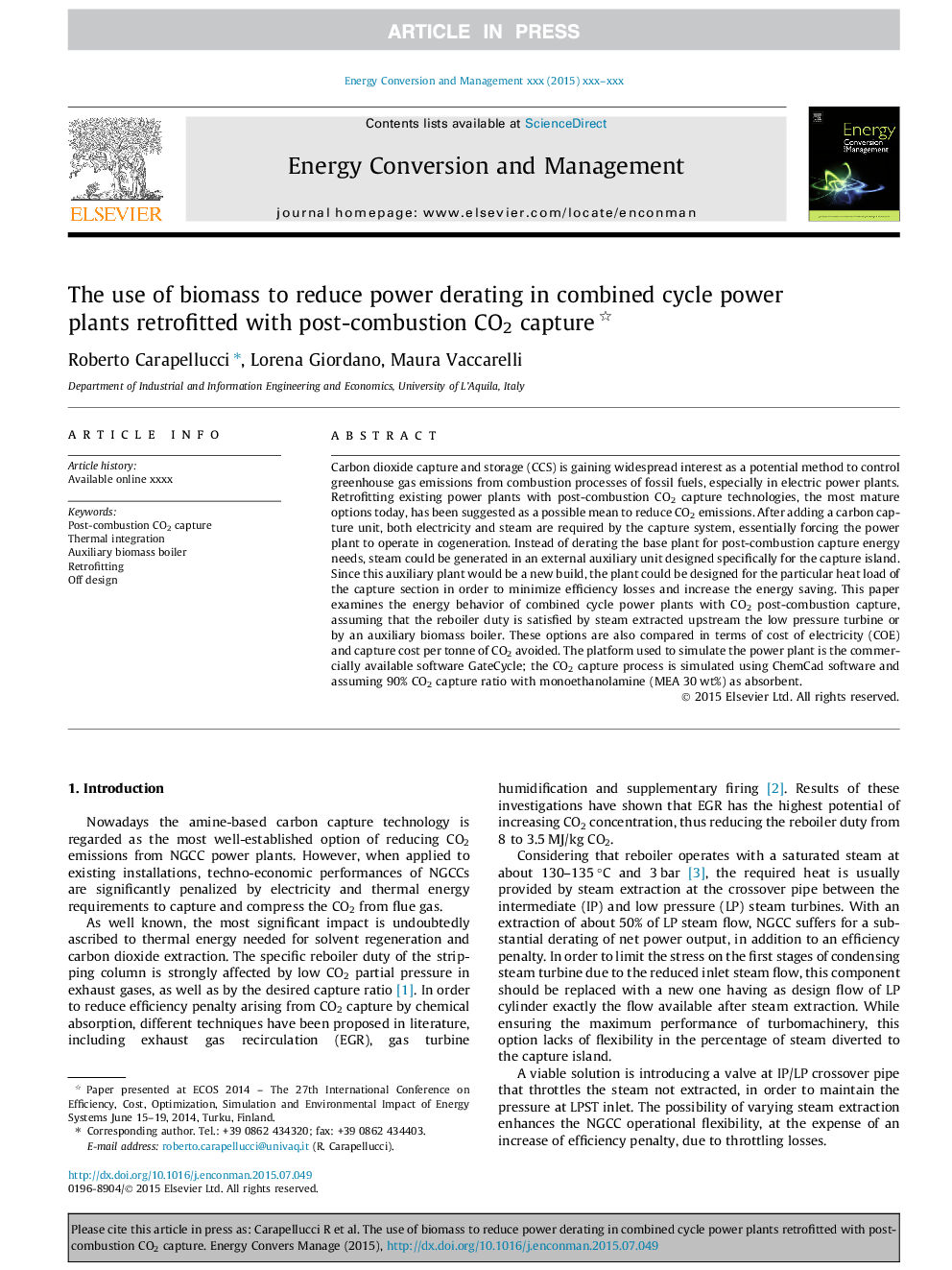| Article ID | Journal | Published Year | Pages | File Type |
|---|---|---|---|---|
| 7161542 | Energy Conversion and Management | 2016 | 8 Pages |
Abstract
Carbon dioxide capture and storage (CCS) is gaining widespread interest as a potential method to control greenhouse gas emissions from combustion processes of fossil fuels, especially in electric power plants. Retrofitting existing power plants with post-combustion CO2 capture technologies, the most mature options today, has been suggested as a possible mean to reduce CO2 emissions. After adding a carbon capture unit, both electricity and steam are required by the capture system, essentially forcing the power plant to operate in cogeneration. Instead of derating the base plant for post-combustion capture energy needs, steam could be generated in an external auxiliary unit designed specifically for the capture island. Since this auxiliary plant would be a new build, the plant could be designed for the particular heat load of the capture section in order to minimize efficiency losses and increase the energy saving. This paper examines the energy behavior of combined cycle power plants with CO2 post-combustion capture, assuming that the reboiler duty is satisfied by steam extracted upstream the low pressure turbine or by an auxiliary biomass boiler. These options are also compared in terms of cost of electricity (COE) and capture cost per tonne of CO2 avoided. The platform used to simulate the power plant is the commercially available software GateCycle; the CO2 capture process is simulated using ChemCad software and assuming 90% CO2 capture ratio with monoethanolamine (MEA 30Â wt%) as absorbent.
Related Topics
Physical Sciences and Engineering
Energy
Energy (General)
Authors
Roberto Carapellucci, Lorena Giordano, Maura Vaccarelli,
